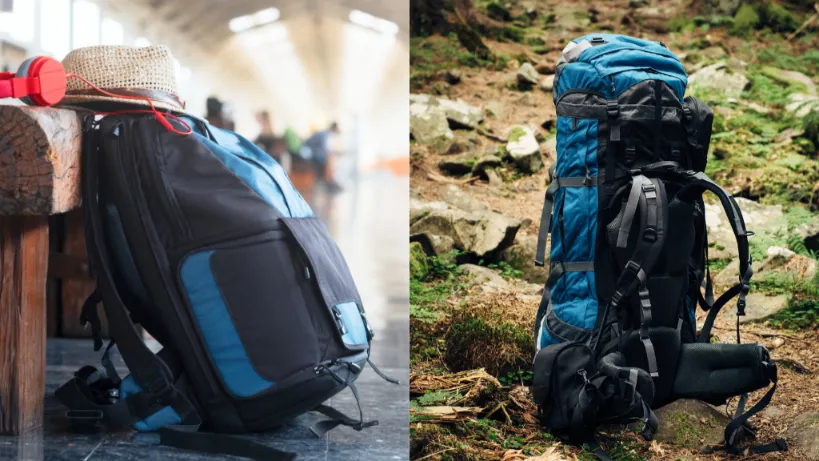Large hiking backpacks are not packs you grab for a quick day hike or an overnight stay. These are the big guys, usually starting from a hefty 50 liters capacity, designed for multi-day adventures that call for more than just a few snacks and a water bottle.
They come loaded with features, such as plenty of compartments for organization, dedicated sleeping bag spaces, and sometimes even built-in rain covers.
They’re meant to carry a lot but also to make sure you can haul that weight as comfortably as possible. Unlike their smaller siblings, these packs are built for the long haul like weeks or even months on the trail.
In this guide, I’ll be walking you through my absolute top picks for large hiking backpacks, breaking down what makes each one stand out.
What Are the Best Large Hiking Backpacks?
Best Overall: REI Co-op Flash 55 Pack | For Men | For Women
Best Comfort: Gregory Paragon 58 Pack | For Men & Women
Best Breathability: Osprey Atmos/Aura AG 65 | For Men | For Women
Best Ultralight: Hyperlite Mountain Gear Southwest 70 Pack | For Men & Women
Best for Long Trips: Gregory Baltoro/Deva Pro Pack | For Men | For Women
REI Co-op Flash 55 Pack
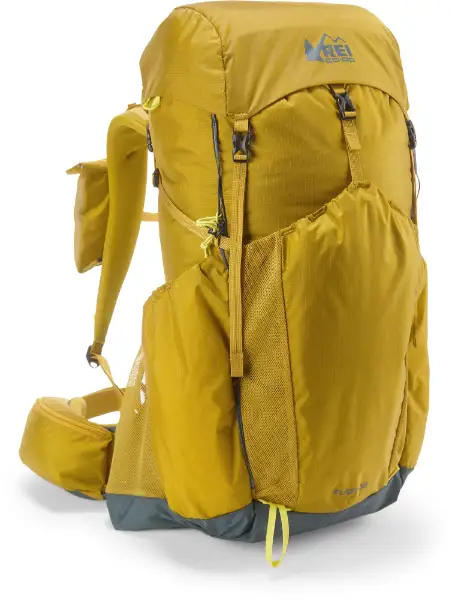
KEY FEATURES
PROS
CONS
The REI Co-op Flash is a steal at $199. For that price, you’re getting a top-notch pack that outshines many of its pricier competitors.
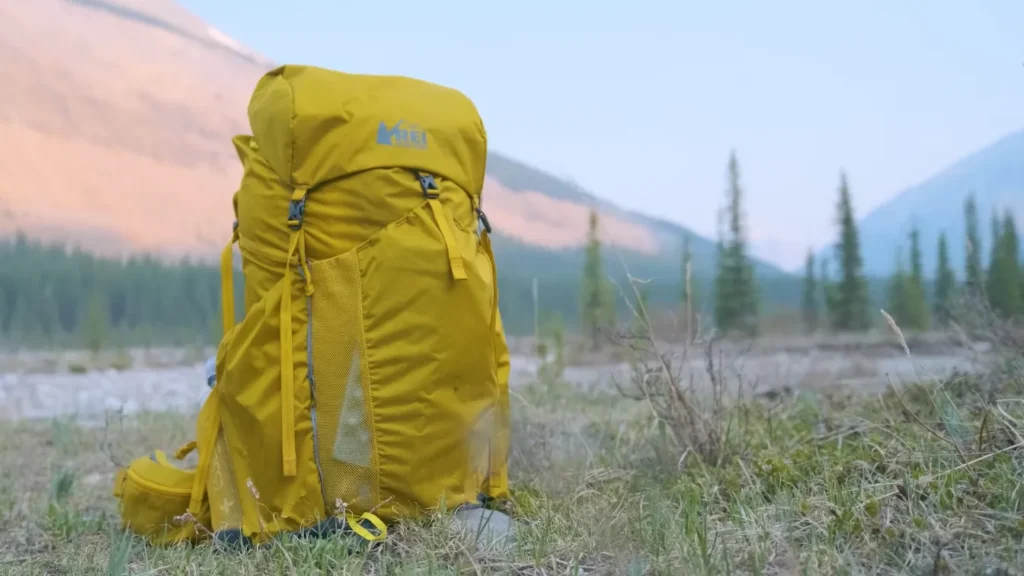
First off, it carries your load beautifully and stays balanced even with a 40 pounds load. With its trampoline-style back, it’s very comfortable, and I often forget I’m even carrying it.
Its 55-liters capacity feels practically limitless, yet everything remains organized and easy to access. The forward-angled water bottle holders are one of my favorite accessibility features. I don’t see it so often in other backpacks, but it’s a small but practical detail that makes a big difference in how easily I can access my water.
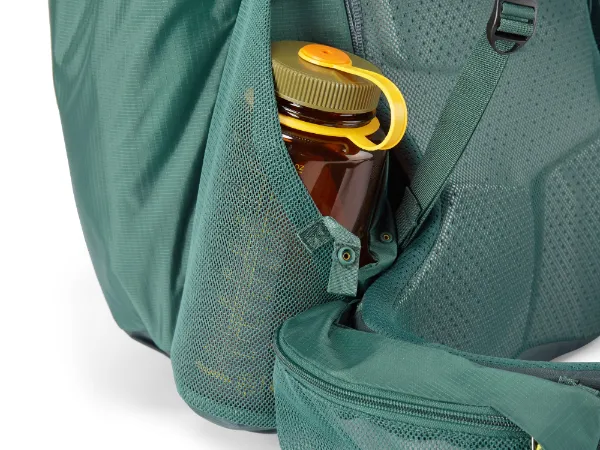
Adjustability is another strong point. The torso length can be fine-tuned to fit just right, which is great for those of us who fall between standard sizes.
However, a few design tweaks could elevate this pack even further. For instance, the front pocket could benefit from an all-mesh design for added space and ease of access.
Another rather annoying thing is that the pack does have a tendency to squeak when brushing against branches, which can give you a bit of a startle (or a chuckle, depending on how you see it).
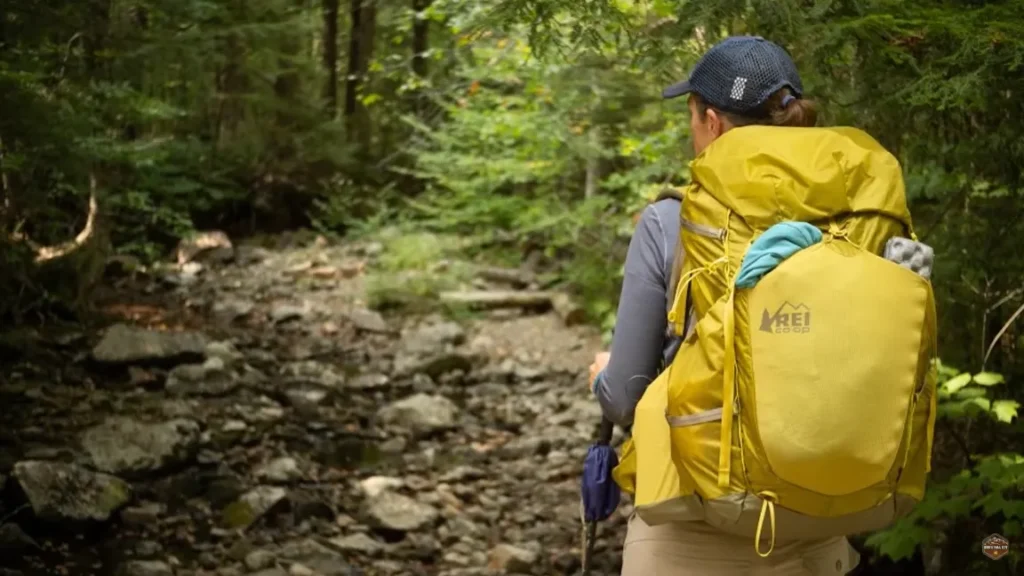
Verdict
Despite minor gripes, I still believe the REI Co-op Flash is the best large hiking backpack I’ve owned. It handles weight brilliantly, possibly better than any pack I’ve used before. And for under $200, you’re getting incredible value – a durable, versatile pack that won’t break the bank.
Gregory Paragon 58 Pack

KEY FEATURES
PROS
CONS
Comfort is where the Paragon sets itself apart from the crowd. The hip padding and belt do a fantastic job of shifting weight from your shoulders to your hips, making long hikes feel a whole lot easier.
The back panel and shoulder straps are another win, offering enough cushioning to keep you on the trail all day without that nagging ache in your shoulders.

The Paragon handles lighter loads really well. Despite its ability to carry up to 50 pounds, it shines the most when packing up to 40 pounds. It’s definitely not a heavy-hauler, but it’s a prime choice for fast-paced adventures where you’ve got your lightweight kit dialed in.
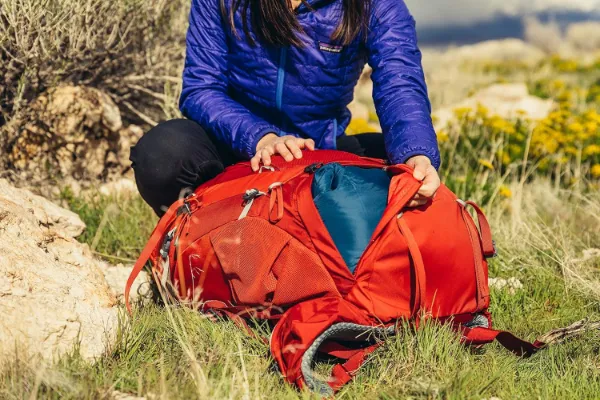
Gregory also made access to the main compartment much easier. Instead of the typical duffel-style opening, they’ve introduced a simpler side access. The zipper runs almost the entire length of the pack, making it very easy to grab what you need without having to unpack everything.

I usually avoid taking it on overnight hikes as it isn’t the lightest option, weighing in at 3 lbs. 8 oz. (although it’s a reasonable weight, considering how much it can carry and how comfortable it is), but if you’re planning a longer trip – 3, 4, or even 5+ days – this pack is an amazing choice.
Gregory threw in some bonuses too. There’s a waterproof rain cover included and for outdoor sleepers, there’s a dedicated compartment for your sleeping bag.
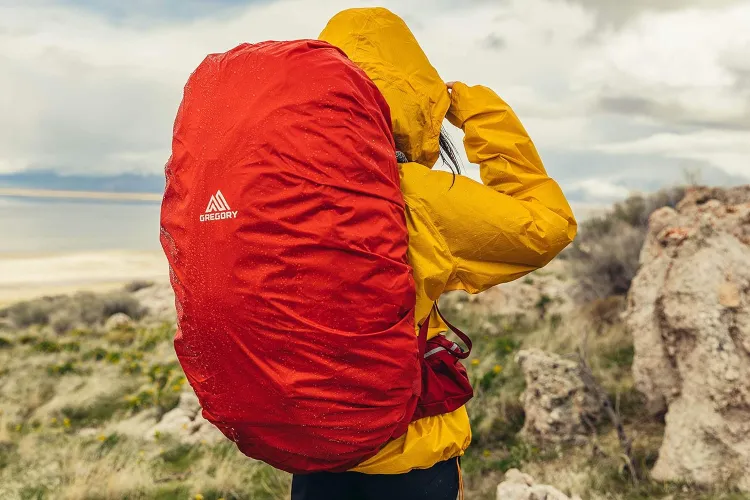
There is a 68-liter and a 48-liter version of the Paragon available. Opting for the 58 or even the 68 might be more beneficial as on a multi-day trip you could find yourself needing to pack and attach multiple items externally that could have fit inside.
Although you can easily adjust the Paragon to fit women’s frame, there’s also a women’s version of this backpack – Gregory Maven. The key difference you’ll find is in its size and weight – the Maven comes with a 55 liters capacity and is a few ounces lighter.
Verdict
The Gregory Paragon 58 is a stellar option for hikers looking for a versatile, comfortable, and durable pack for the 3-5 day trips.
It’s not the lightest backpack out there, and it’s best not to push it beyond 40 pounds, but for everything it offers, it’s an amazing choice.
Osprey Atmos/Aura AG 65
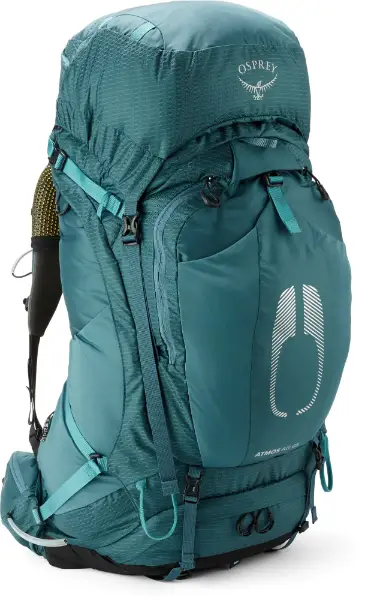
KEY FEATURES
PROS
CONS
The Osprey Atmos/Aura AG 65 is a backpack that’s almost reached legendary status among hikers, mainly due to its superior comfort and breathability.
Please note, the Osprey Aura is essentially the sister of the Atmos AG 65, boasting almost identical features but tailored for a woman’s frame.

First up, this pack shouts comfort from every angle. It has a trampoline mesh that not only covers the entire back panel but extends to the hip belt as well.
The shoulder straps are equally comfortable. Starting off thick around your shoulders where you need cushy support, they taper down towards your chest, becoming thinner and more breathable. Ideal for long hauls where you need all the support you can get without feeling like you’re being suffocated by padding.
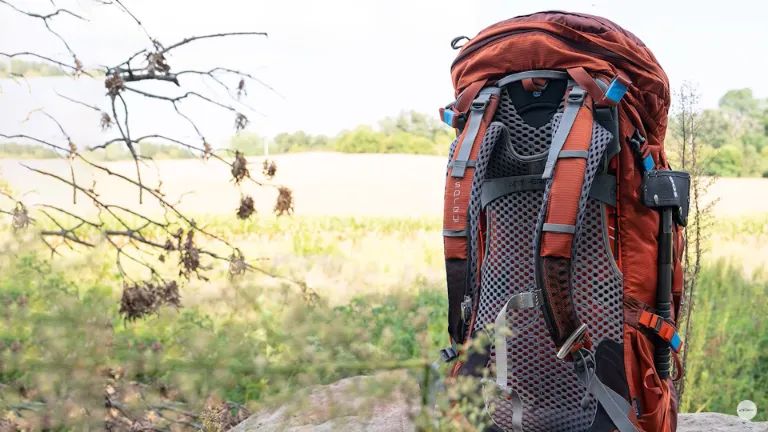
If you tend to work up a bit of a sweat even in cooler climates, you’re going to love the back panel on the Atmos AG 65. Exceptionally well-ventilated, it’s terrific for warmer adventures or for anyone who tends to get sweaty. This breathability sets the Atmos AG 65 apart from many backpacks.
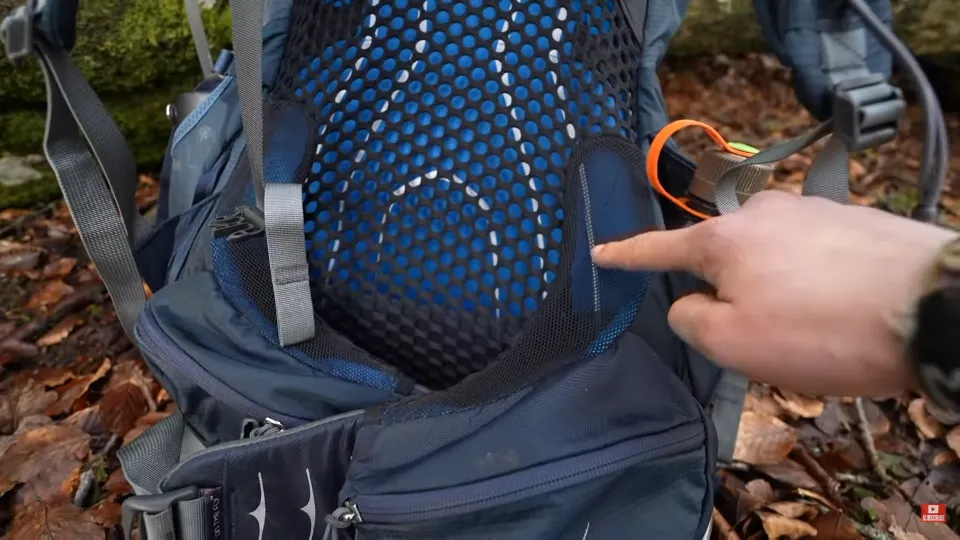
While the Atmos AG 65 is pretty stellar at carrying loads up to 40 pounds, pushing it past 45-50 might make you rethink your life choices. I found that it gets not as snug as I’d like with heavier loads. Simply put, there are other packs out there that might handle a heavy load more efficiently.
And then there’s the water bottle situation. The dual-sided mesh pockets are great for easy access without having to take off your pack – a blessing when you’re mid-hike and just need a quick sip. But, large and tall bottles can be a bit awkward, getting in the way of your natural elbow movement.
Verdict
If comfort and breathability are high on your list, the Osprey Atmos/Aura AG 65 deserves a spot in your gear closet.
It’s not the lightest pack, but for what it offers in comfort and features, it’s hard to beat.
Hyperlite Mountain Gear Southwest 70 Pack
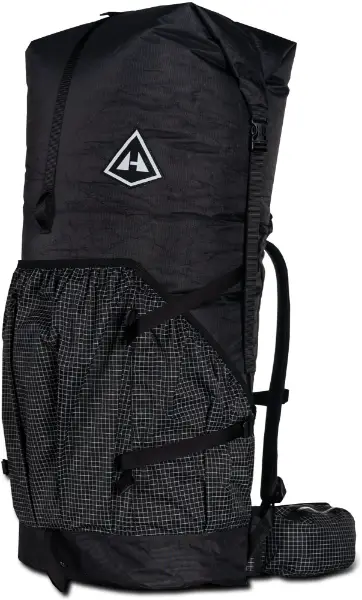
KEY FEATURES
PROS
CONS
The Hyperlite Southwest does come with a pretty hefty price tag but it isn’t your ordinary hiking backpack. It’s ultralight, tipping the scales at just 2.7 lbs. Imagine that!
While other packs with this capacity (70L) feel like they’re adding an extra load before you even start packing, this one feels almost weightless.
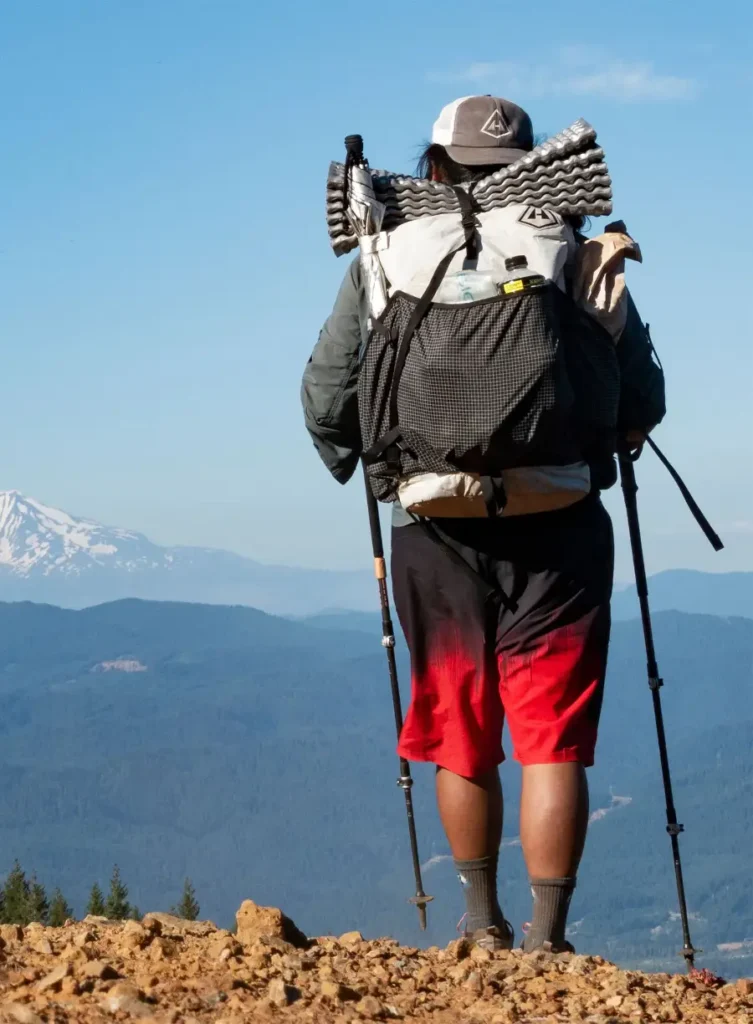
But can something that light really handle heavy loads? Absolutely. This pack is my go-to when I need to lug around larger and heavier gear (up to 60 pounds) without feeling weighed down.
That said, it might not hug your body as closely or distribute weight like bulky, rigid-frame behemoths. It’s not the most comfortable backpack you can get, but the pounds it saves makes up for it, making your hike a lot more enjoyable.

When it comes to surviving the wild, the Hyperlite Southwest doesn’t just survive – it thrives. Thanks to its Dyneema Composite Fabric construction, it’s ridiculously tough.
Dyneema is about five times stronger than nylon or polyester (!) and is known as the world’s strongest fiber.

It’s quite logical that this backpack is also resilient against tears, abrasions, and the usual wear and tear. Finding another hiking backpack crafted from this material is like finding a needle in a haystack.
The $425 price tag is the only thing that might give you pause. It’s an investment for sure, but it’s one worth making for those serious about keeping their pack weight down without compromising on carrying capacity or durability.
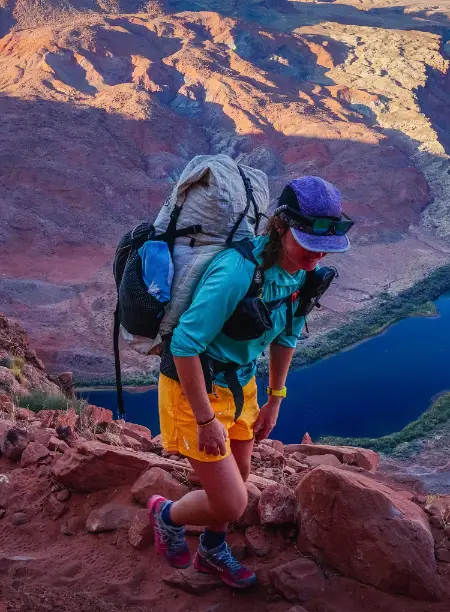
Verdict
The Hyperlite Southwest is a marvel of modern hiking gear. It combines incredible lightness with durability in a way few other backpacks can.
If you’re someone who’s already lightened your load with other ultralight gear and cherishes the thought of a backpack that won’t add unnecessary weight, then the Hyperlite Southwest is for you.
Gregory Baltoro/Deva Pro Pack
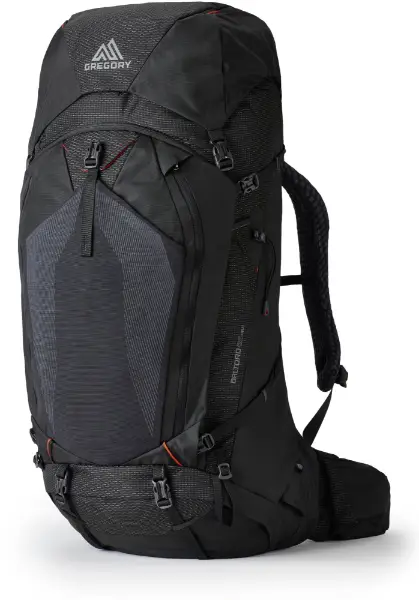
KEY FEATURES
PROS
CONS
The Baltoro and Deva are the titans of our large hiking backpacks list. With capacities ranging from 80-90 liters for the Baltoro and 75-85 liters for the Deva, these packs are perfect companions for those of us who don’t travel light or are gearing up for a long stint away from civilization.

What sets these giants apart? They’re engineered for comfort under load.
An interesting thing I noticed is that the waist belt seems to “mold” to your anatomy, allowing you to comfortably carry loads of up to 70 pounds!
The padding is also top-notch, refusing to squish down even under a hefty load. Plus, the bag’s design and its suspension system work together brilliantly to keep everything stable and close to your back.
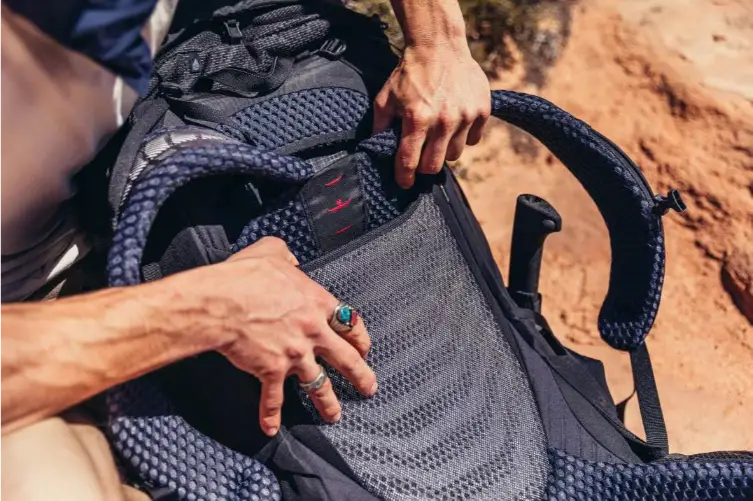
You have 9 amazing external pockets at your disposal. The water bottle pockets here are cleverly designed, making it super easy to grab a drink without breaking stride.
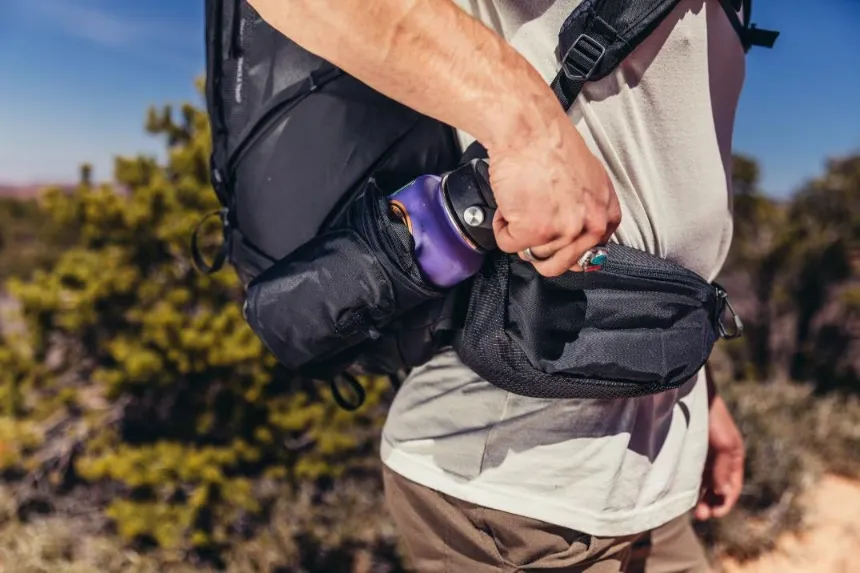
However, there’s a catch. The Baltoro/Deva packs tip the scales at around 5 lbs. 2.9 oz. to 5 lbs. 14.1 oz., depending on which version and size you go for. They’re not exactly featherweights, but when you’re planning to carry what feels like a small house on your back, that’s a trade-off worth making, in my book.
One small hiccup, though – if you’re like me and practically have your smartphone glued to your hand, the hip belt pocket might disappoint. It’s a bit too small to hold a smartphone or other devices.
Verdict
If you’re the type who views hiking as a chance to bring along the kitchen sink, then the Gregory Baltoro/Deva could be just what you’re looking for.
Yes, they’re on the heavier side, and no, they won’t magically make your load lighter. But what they will do is make carrying that load a heck of a lot more comfortable!
What Size Backpack Do I Need for a 7-Day Hike?

For a 7-day hike, you’re looking at needing a pack somewhere in the 50-65 liter range. The exact size you need really depends on a few things:
- Your Gear: Are you rocking the latest ultralight tent and sleeping bag? Or are you more of a “comfort over everything” kind of hiker? Ultralight gear allows you to lean towards the smaller end of that range.
- The Season: Planning a summer hike? You’ll probably need less gear than you would for a chilly autumn adventure. More layers and a warmer sleeping bag for cool nights can fill up a backpack pretty quickly.
- Food and Water: Think about where you’re heading. Will you have access to water sources, or do you need to carry a day’s supply with you? And food – freeze-dried meals save a lot more space than a bunch of cans.
- Personal Comfort: Some folks don’t mind a backpack that’s filled to the brim, while others like a little wiggle room. If you hate struggling to stuff everything back in after setting up camp, consider sizing up.
While we’re discussing sizes, don’t forget about weight. Your full pack shouldn’t weigh more than about 20% of your body weight. Packing smart is balancing what you need with what you can comfortably carry for days on end.
How Big of a Backpack Do You Need for Thru-Hiking?

Thru-hiking is different than regular multi-day hiking, as it means covering a long distance over several weeks or months.
For the thru-hike, like Appalachian Trail, Pacific Crest Trail, and Continental Divide Trail, choose a backpack ranging from 50L to 80L.
Why this range? It’s big enough to carry your essentials – shelter, sleep system, clothes, food, water, and some little luxuries like a book or a camera. But it also stops you from packing unnecessary stuff that’ll just weigh you down.
When you’re living out of your backpack for months, size does matter – but bigger isn’t always better. It’s like packing a suitcase for a vacation. You might throw in everything but the kitchen sink, just because you can.
But when you’re carrying your life on your back every day, across mountains and valleys, you’ll wish you packed lighter.
The perfect size for you also depends on your packing style and the gear you choose. If you’ve invested in ultralight gear, you might get away with a smaller pack, maybe even as small as 50L.
On the other hand, if you’re not ready to give up certain comforts or you’re hiking in cold weather (which means bulkier gear), you might need to lean towards the larger side of the range.
Conclusion
If you’ve stuck with me to this point, it’s pretty clear you’re serious about finding a large hiking backpack that’s more than just a place to stash your snacks and water.
Whether you’re eyeing a less demanding multi-day hike or setting your sights on an epic weeks-long thru-hike, the backpacks we’ve talked about today are not just random picks.
They’re tried and true companions that have accompanied seasoned hikers on countless adventures, earning rave reviews for their performance on the trail.
My advice is to look beyond just the numbers and think about what you really need on the trail. Is it more space? Better organization? Or maybe something that’s super light?
The backpacks listed in this guide have seen it all!

Lukas Heller
Hey there! I’m Lukas, co-founder of BigfootHiking.com, alongside my adventurous wife Martha. Originally from Germany, I landed in Phoenix, Arizona, in 2015, where I’ve been scouting out new trails ever since (though they’re getting scarce!). By day, I’m a software developer, but my heart belongs to hiking – I’m always plotting our next trip. When I’m not coding or on the trails, you’ll find me hanging out with our Pit Bull, Zeus.




